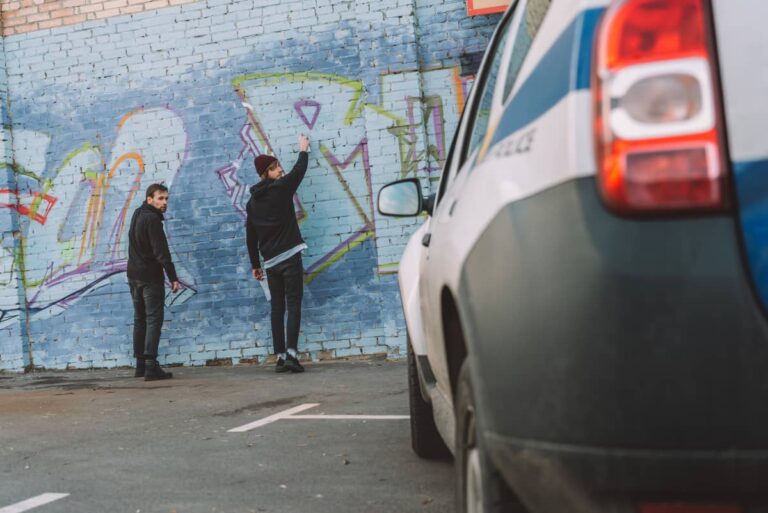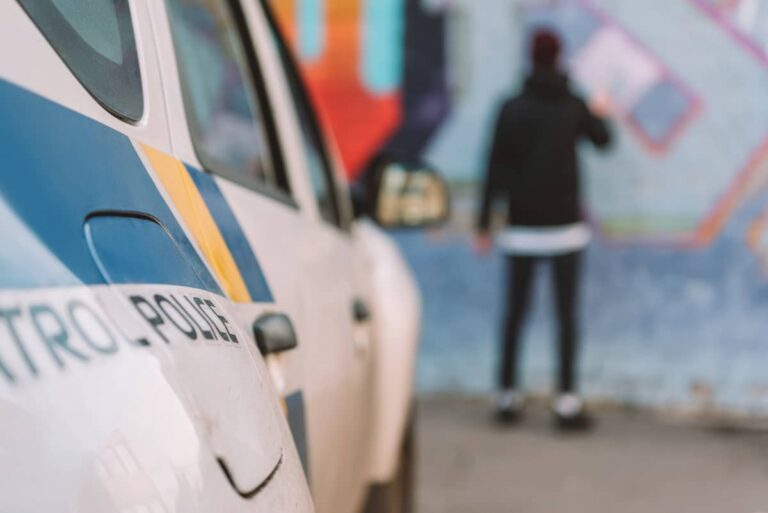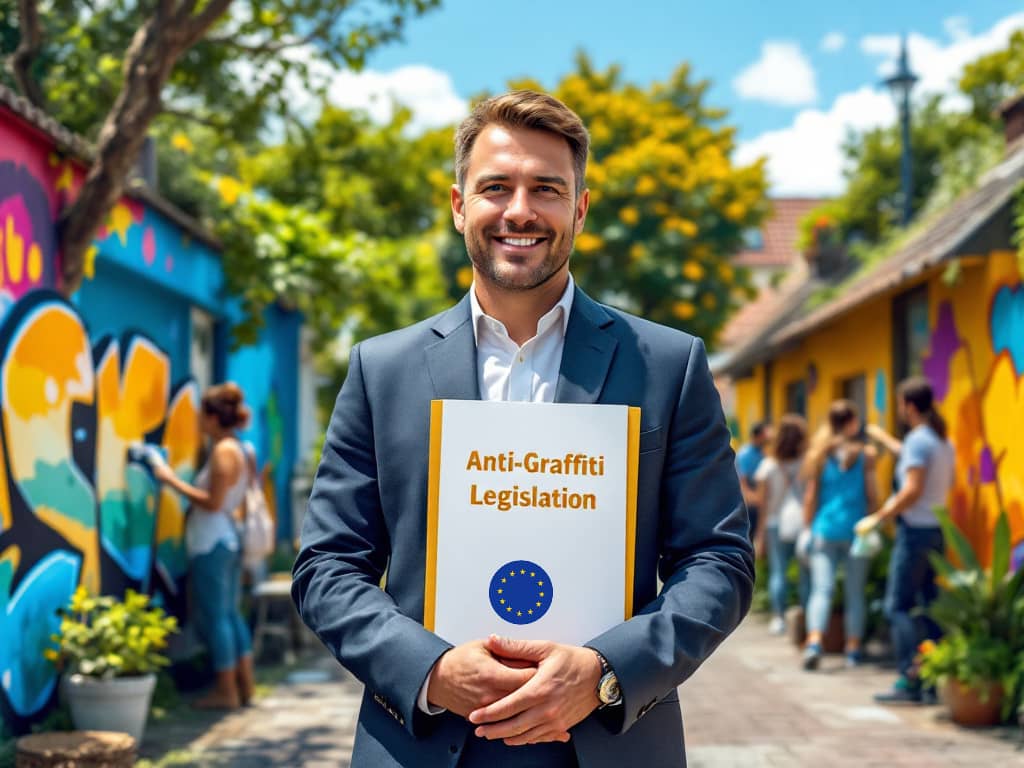Anti Graffiti Legislation
in the Netherlands
-
Ko van den Boom
- Reading time: 24 minutes
- Technical info

Overview of Anti-Graffiti Legislation in the Netherlands
The Netherlands is a nation known for its picturesque canals and vibrant cities, which faces an ongoing battle against an unwelcome form of street “art”: graffiti. Unauthorized graffiti often mars public and private property, impacting the aesthetic appeal of cities and contributing to a sense of disorder, which can in turn have negative economic impacts on municipalities. This necessitates a legal framework to address the issue while balancing the need to protect property with the right to freedom of expression of artists and activists.
Between Art and Vandalism
Graffiti has long been a contentious issue in urban environments of the Netherlands, straddling the line between art and vandalism. Author Nicholas Ganz notes in his book Graffiti World: Street Art from Five Continents that some of the earliest European exhibitions of graffiti art happened in Amsterdam. In the Netherlands, anti-graffiti legislation reflects this duality, aiming to regulate graffiti while acknowledging its cultural significance. This article explores the legal framework governing graffiti in the Netherlands, summarizing key laws, enforcement mechanisms, and societal implications.
Contents
Ko van den Boom
Main Categories
Main Categories
Introduction to the Anti-Graffiti Legislature in the Netherlands
Graffiti is often seen as a form of expression that can enhance urban landscapes, yet it can also lead to significant property damage and community distress. In the Netherlands, where freedom of expression is constitutionally protected, the challenge lies in balancing this freedom with the rights of property owners and public safety. The Dutch legal system addresses graffiti through various laws and local ordinances, which aim to manage both illegal graffiti and sanctioned street art.
The Legal Arsenal:
Combating Graffiti in the Dutch Legal System
Article 350 of the Dutch Criminal Code
Dutch law deals with graffiti primarily through a combination of criminal and administrative regulations. Learn more about Article 350. The cornerstone of anti-graffiti legislation lies within the Dutch Criminal Code (Wetboek van Strafrecht), specifically Article 350. This article deals with property damage in general, encompassing actions like damaging, destroying, or rendering unusable someone else’s property. Graffiti, by defacing property without the owner’s consent, falls squarely under this provision within the context of the guidelines for criminal prosecution of vandalism.
Penalties under Article 350 can vary depending on the severity of the damage, ranging from fines to imprisonment. In more serious cases, where the damage is or involves cultural heritage sites, offenders may face higher fines or even jail time.
Local Ordinances within Dutch law
In addition to the Criminal Code, municipalities across the Netherlands employ their own municipal bylaws (Algemene Plaatselijke Verordening – APV).
These bylaws provide local authorities with the power to further regulate graffiti within their jurisdictions. They often include specific provisions regarding graffiti which are valid localy, such as:
- Prohibitionof graffiti:
Explicitly banning the act of applying graffiti on public or private property without - Finesfor offenders:
Municipalities can set their own fine schedules for graffiti violations, which may be in addition to any penalties imposed under the Criminal Code. - Clean-upresponsibilities:
Bylaws may stipulate that property owners are responsible for removing graffiti from their property within a specific timeframe.
It’s important to note that the specific provisions within APVs can differ significantly between municipalities. For instance, some cities may have stricter rules or higher fines than others, reflecting their particular approach to tackling graffiti.
Environmental legislation in the context of graffiti in the Netherlands
Environmental legislation can also play a role in the context of anti graffiti legislation. It applies when graffiti involves the use of spray paints that contain harmful substances. These laws aim to protect the environment and public health by regulating the use and disposal of such materials. Offenders causing environmental damage through graffiti may face additional penalties under relevant environmental laws.
Enforcing Anti-Graffiti Legislation: Who's Responsible?
Enforcement of anti-graffiti legislation in the Netherlands involves a multi-faceted approach:
The Police: The primary responsibility for investigating graffiti incidents and apprehending offenders lies with the Dutch police. They respond to reports of vandalism, gather evidence, and work to identify and prosecute those responsible.
Municipal Enforcement Officers: These officers play a crucial role in enforcing municipal bylaws related to graffiti. They have the authority to issue fines to offenders caught in the act or identified through investigation. They also monitor compliance with clean-up orders issued to property owners.
Property Owners: Property owners have a responsibility to maintain their property and remove graffiti promptly. Failure to do so can result in fines or other penalties under municipal bylaws. Some municipalities offer assistance programs to help property owners with graffiti removal.
Parental Responsibility: In cases where offenders are minors, their parents or legal guardians can be held liable for the damage caused. This aims to encourage parental supervision and discourage juvenile delinquency and vandalism.
Enforcement Mechanisms for graffiti vandalism in the Netherlands
Penalties and Fines
Penalties for graffiti vandalism can vary significantly across municipalities but generally include fines ranging from €75 to €5,000 for severe offenses.
In some cases, offenders may also be required to participate in community service or pay restitution for damages caused by their actions.
Removal Policies
Municipalities are responsible for removing illegal graffiti from public spaces. Many local governments offer services to assist property owners in removing unauthorized graffiti from their buildings. For instance, South Holland District Council has implemented a Graffiti and Street Art Management Policy that outlines procedures for removal and provides support to property owners affected by vandalism and illegal street art.
Legal vs. Illegal Graffiti: The Art vs. Vandalism Debate
The legal framework surrounding graffiti is further complicated by the ongoing debate about its artistic merit. While some view graffiti as an unwelcome nuisance, others recognize it as a legitimate form of artistic expression.
Designated Areas for Legal Street Art
This dichotomy has led to the emergence of designated graffiti areas in some Dutch cities like Amsterdam, Utrecht, Eindhoven, and Rotterdam. These areas provide legal spaces for graffiti artists and activists to showcase their work, fostering creativity while mitigating unauthorized vandalism. Websites like legal-walls.net offer a list of such sites. These initiatives promote artistic expression, positively impact urban aesthetics, and can even boost local economies through “graffiti-themed” tourism.
Designated Areas for legal Street Art
This dichotomy has led to the emergence of designated graffiti areas in some Dutch cities like Amsterdam, Utrecht, Eindhoven, Rotterdam and more. These areas provide legal spaces for graffiti artists and activists to showcase their work, fostering creativity while mitigating unauthorized vandalism. The effectiveness of this approach in diminishing illegal graffiti remains a subject of debate. On internet websites like
www.legal-walls.net you can find a list of sites where creating graffiti is legal. This initiatives that promote artistic expression contribute positively to urban aesthetics and can even have positive impacts on the local economy because they foster “graffiti themed” tourism.
This tension between artistic freedom and
regulatory frameworks continues to
spark debate among artists, local governments, community members and academia.
Public perception and Community initiatives to combat illegal graffiti in the Netherlands
Public opinion plays a crucial role in shaping anti-graffiti legislation in the Netherlands. While some view graffiti as an eyesore that detracts from community aesthetics, others celebrate it as a legitimate form of artistic expression that reflects urban culture and others even claim that graffiti as street art can be a tool for social inclusion. This divide influences how laws are crafted and enforced at both local and national levels.
Initiatives to combat illegal graffiti
Community initiatives and prevention programs play a vital role in addressing the root causes of graffiti. These programs often involve education, awareness campaigns, and engaging young people in constructive art activities to channel their creativity in positive ways
Conclusion
This complex issue calls for a constant dialogue that balances freedom of expression with property rights
Anti-graffiti legislation in the Netherlands reflects a multifaceted approach to tackling a complex issue. While laws are in place to deter vandalism and protect property, there’s also a growing recognition of the need to balance enforcement with the freedom of expression. The effectiveness of these laws depends on a combination of factors, including robust enforcement, community involvement, and fostering a culture of respect for public spaces.
The ongoing debate surrounding graffiti as art versus vandalism highlights the need for continued dialogue and innovative solutions. Finding a balance between preventing damage to property and promoting creative expression remains a key challenge in the Dutch context. As society evolves, the legal framework and societal attitudes towards graffiti are likely to continue evolving as well, requiring ongoing evaluation and adaptation to effectively address this persistent urban challenge.





